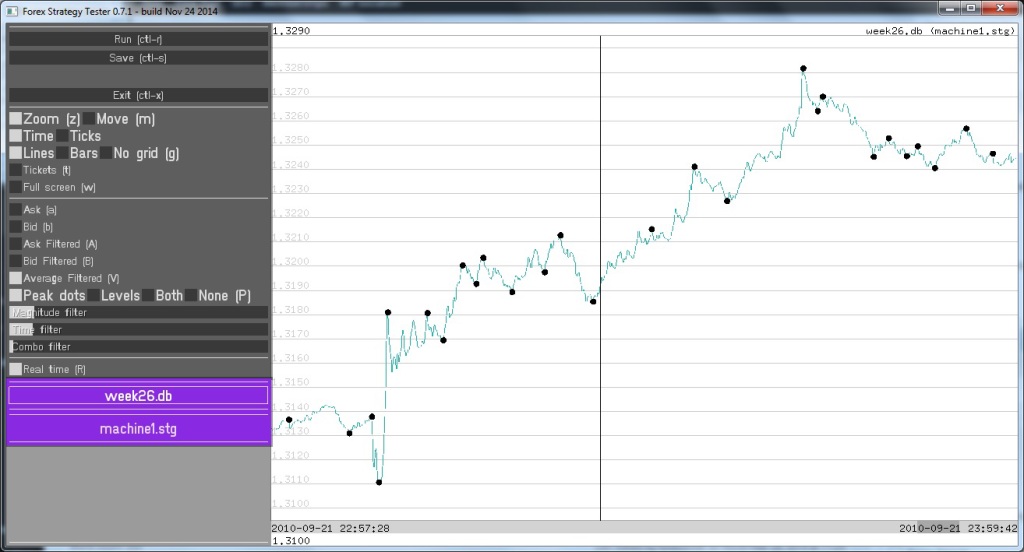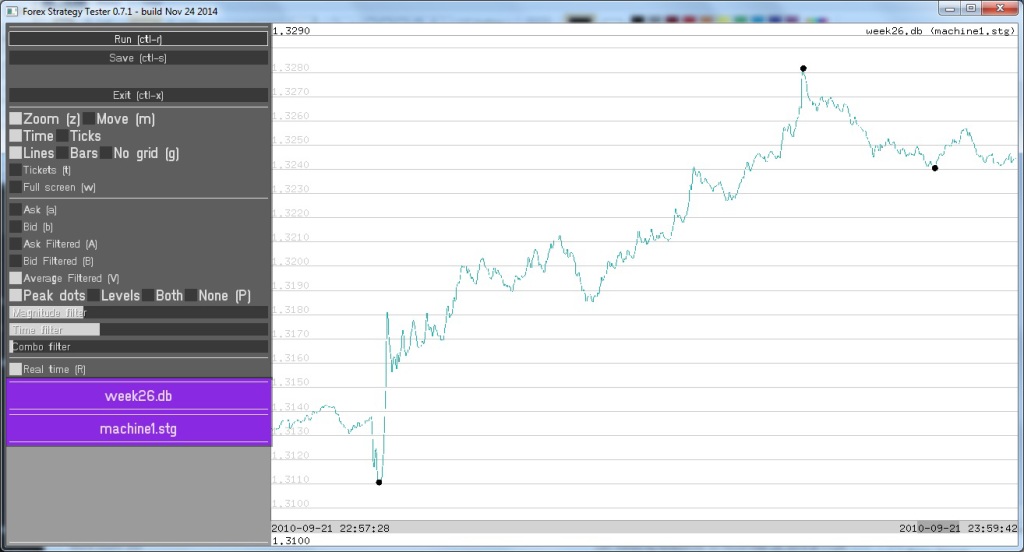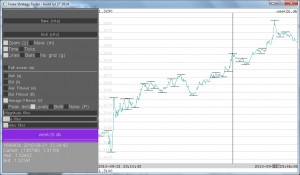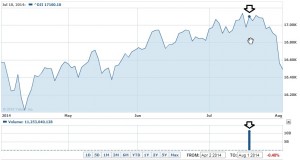Forex trading strategies are using multiple time frames. However, even if you are not a day trader but just want to open a long-term position, you have to enter and exit the market in the real time. Period.
This means we have to deal with daily volatility, which can sometimes reach 2% and even more. This is a significant number for leveraged trading. Even if the trading strategies are to stay in the position for long time in anticipation of bigger gains. Good entry timing not only gives you more profit, but also lets you place better stops.
Indicators are of no help in real-time here because they are lagging. E.g. popular oscillator indicators like RSI can show extreme values for days. Market may really be topping or bottoming, but you won’t be able to find the best moment to enter the market.
Markets don’t move in a straight line. Even powerful trends always have pullbacks. The only reliable observation we can make is that we always see zigzags. If we see a local top, this will always be followed by a turn and then a local bottom.
In addition, markets have a fractal nature. It means that the pattern we see on a short time frame will become a smaller part of the same picture on the longer time frame.
We used this observation in developing price pattern market entry algorithm. We use it as a building block of all our trading strategies.
Practical Implementation For Trading Strategies
We implemented the algorithm as a part of our Smart Forex Strategy Tester software.
Here is couple of examples how the algorithm works. Both refer to the same sample of market data covering only couple of hours. The detected pivot points are shown as black dots on the graph.

You can see that the volatility for these 2 hours is over 1%. The graph is an average of bid and ask, slightly filtered for easier viewing. Note that the pivot points are calculated in real time. I.e. each point is only evaluated based on the price data to the left of it.
In the example #1, the algorithm sensitivity is set higher (note short horizontal sliders) and it captures more pivot points. As you can see, during these 2 hours the algorithm generated almost 30 signals. Which are definitely can be used for profitable day trading strategies.

In the example #2, we lowered the sensitivity of the algorithm (see longer values of horizontal sliders) and it only detected 3 pivot points within same 2 hours. You can see that all 3 are profitable market entries. Moreover, the algorithm managed to capture both the market top and bottom for given interval.
If you are interested, you can download Smart Forex Strategy Tester and try for yourself.

